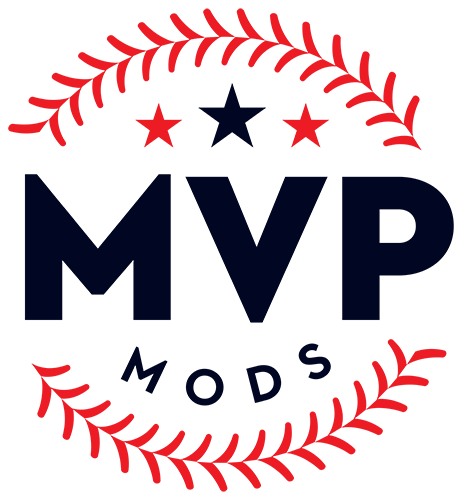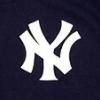-
Posts
21415 -
Joined
-
Days Won
82
Content Type
Profiles
Forums
Downloads
Everything posted by Yankee4Life
-
9 out of 10, 61 seconds. I was going good and then I missed the last one.
-
Um, it does matter. When he got to St. Louis he had a lot of success and then he blamed the Yankee coaching staff for his troubles in the Bronx. He was not that good of a pitcher here Jim. Oh, he'd start the game well but then he'd fall apart and that was it. If you believe him it was the coaching that held him back. Now that the National League is beginning to figure him out I am very happy he is doing so bad. And you are right. Bader has been doing well. Oh, wouldn't that be nice? This way he can run out and get another tattoo.
-
Jordan Montgomery only made it through four innings last night and gave up six runs, all earned. He has been hit hard for the third start in a row and four of his last six mound appearances. He has a 8.16 ERA over his last three starts. Couldn’t have happened to a nicer guy. He must think he is back in pinstripes with the way he has been pitching. **** HIM.
-
10 out of 10, 39 seconds. It was a rare day. I had a nice tempo going on all of the questions.
-
9 out of 10, 50 seconds. Not at bad game except for one I had no chance on.
-
10 out of 10, 42 seconds. It's about time I have a decent outing.
-
No, you're wrong about what I meant. I was enjoying the win and I was happy that they beat a team they were supposed to. I was thinking about how Cabrera will ber handled next year because the Yankees do not have a good track record of handing prospects. As for Severino, he's a show-off hot dog who does his best work on the bench while cheering the team on. I also want the best for him too if you are wondering.
-
Oswaldo Cabrera can play the outfield pretty good and also the infield and he is showing he can become a pretty good hitter. I like the way he plays. My question is how are the Yankees going to ruin him? One more question. When do you think is the next time Severino will go on the disabled list?😬
-
8 out of 10, 71 seconds. Impressive today because I guessed at four of them and got them all right.
-
I am happy - no, I’m thrilled at what Aaron Judge did last night and for what he has been doing all year but it overshadowed one big thing last night. Clay Holmes practically put the game out of reach with that home run he gave up in the eighth inning. That is what worries me.
-
6 out of 10, 80 seconds. This one was beyond difficult.
-
5 out of 10, 34 seconds. The only one I knew was the baseball one. The others I guessed.
-
5 out of 10, 71 seconds. I was lucky to get five right!
-
10 out of 10, 49 seconds. I will take these questions any day!
-
9 out of 10, 55 seconds. The first question stumped me.
-
I know that they are not a good team but the point is they still won. I will take it and as far as Milwaukee goes they are not a National League powerhouse. Montas has been doing well also.
-
I copied you. 10 out of 10, 39 seconds.
-
Take a look at the replay of Torres’ Little League home run. Check out the ball boy. He got out of the way of the ball completely and by doing so he made Verdugo run farther to get it and that gave Torres more time to circle the bases.
-
Here is where I differ from you. Yes this was a good win because it easily could have been a bad loss and if you stop and think about it you'll agree with me. 1. J.D. Martinez could have been called safe at first and the score would have been 4 - 3. Who knows what would have happened? 2. No lead is safe at that bandbox of a park and the Yankees could have very well lost it in the ninth or in extra innings. That reversed call was the key moment of the game. They had to do a lot of things right to get that early lead but I understand your hesitance to back them. I'm still worried too but it makes me very happy when I am proven wrong.
-
5 out of 10, 74 seconds.These were borderline impossible questions.
-
He gave up two Pesky Pole home runs. You have to realize how cheap that is. A person can stand at home plate and sneeze and still hit that pole. He gave up one legitimate home run last night and he pitched very good.
-
You’re welcome. This thread is one of the oldest ones on our website and I love to contribute to it because I learn something about every player that gets featured.
-
I don't get it either. Today that didn't matter because I guessed on all of them except for the two baseball questions. 6 out of 10, 46 seconds.
-
In October of 1976 I was in Catholic school and the night of game five of the A.L.C.S. we were given a lot of homework. I went right home and started it right away as soon as I finished my paper route. I got a few hours in and I missed much of the first half of the game but I did not miss the home run by Chambliss. It is still one of my all-time thrills. Now I have to wonder Jim because I am sure you saw the thousands of people storm the field after the ball went over the fence. Why would a cop pull back two boys who just wanted to celebrate like everyone else out on that infield that night?
-
Grover Cleveland Alexander Grover Cleveland "Pete" Alexander broke into the big leagues with a flourish in 1911 with the Philadelphia Phillies, setting a rookie record with 28 wins. And Alexander was just getting started. During his 20 seasons in the big leagues, Alexander would become one of the most successful pitchers the game has ever seen. Using a wide variety of breaking pitches, deceptive speed and pinpoint control, Alexander soon found himself being compared to the top pitchers of his era. He averaged 27 wins per season during his seven years in Philadelphia from 1911-17, including one three-year span in which he won 31, 33 and 30. “He made me want to throw my bat away when I went to the plate,” said Hall of Fame second baseman Johnny Evers. “He fed me pitches I couldn’t hit. If I let them go, they were strikes. He made you hit bad balls. He could throw into a tin can all day long.” Alexander was traded to the Cubs in December of 1917. But after only three appearances in 1918, Alexander was drafted into the Army and served as a sergeant in France during World War I. He was gassed during his service and also suffered from partial hearing loss due to a shell explosion, but he returned to the Cubs in 1919 and led the National League with a 1.72 ERA. Alexander won 27 games in 1920 and led the NL in ERA for the fifth and final time that season with a mark of 1.91. He continued to pace the Cubs' staff throughout the next few years until – at age 39 – he was claimed off waivers by the Cardinals, who were battling for the NL pennant. He won nine games down the stretch, helping St, Louis get to the World Series against the New York Yankees of Babe Ruth and Lou Gehrig. After complete game victories in the second and sixth games, Alexander was called upon in relief in Game 7. St. Louis was ahead 3-2 in the bottom of the seventh, but starting pitcher Jesse Haines was in trouble, having loaded the bases with two outs. Called in from the bullpen only a day after his Game 6 triumph, Alexander would face rookie second baseman Tony Lazzeri, who had knocked in 117 runs during the season. After nearly giving up a grand slam homer down the left field line on a ball that went foul at the last moment, Alexander would strike out Lazzeri and then retire the next five batters before walking Ruth with two outs in the ninth. With Bob Meusel at the plate, Ruth was caught stealing second base, ending the World Series and creating a legendary moment for Alexander. Ruth would write years later: “Just to see old Pete out there on the mound, with that cocky little undersized cap pulled down over one ear, chewing away at his tobacco and pitching baseballs as easy as pitching hay is enough to take the heart out of a fellow.” Alexander retired with a record of 373-208 with 90 shutouts and a 2.56 ERA. He was elected to the Hall of Fame in 1938.



